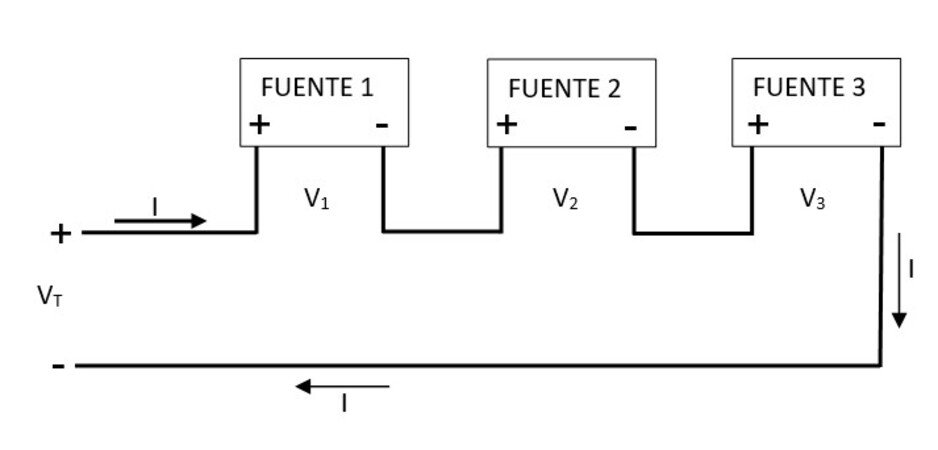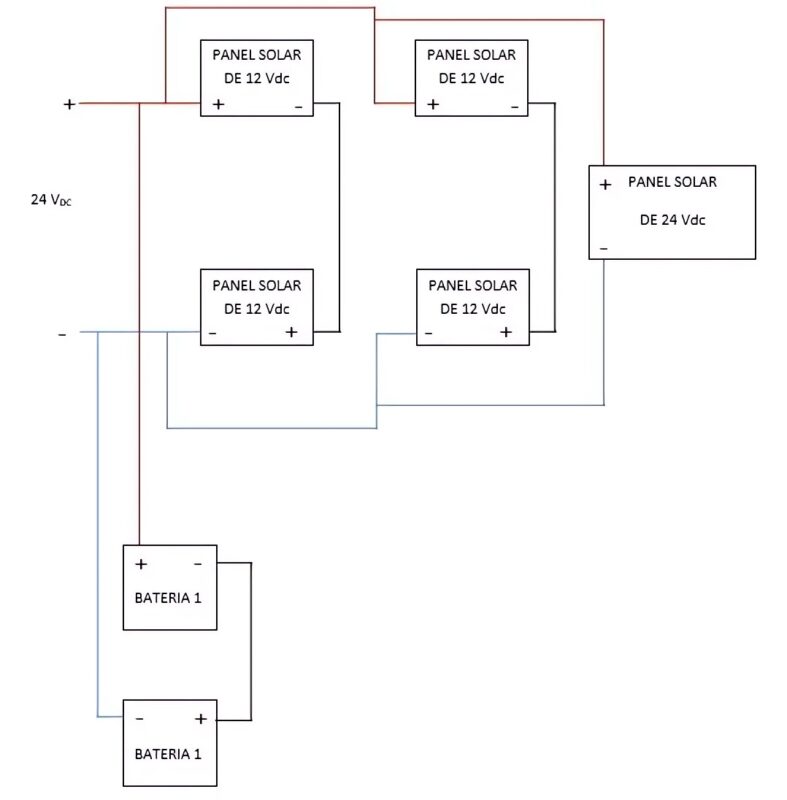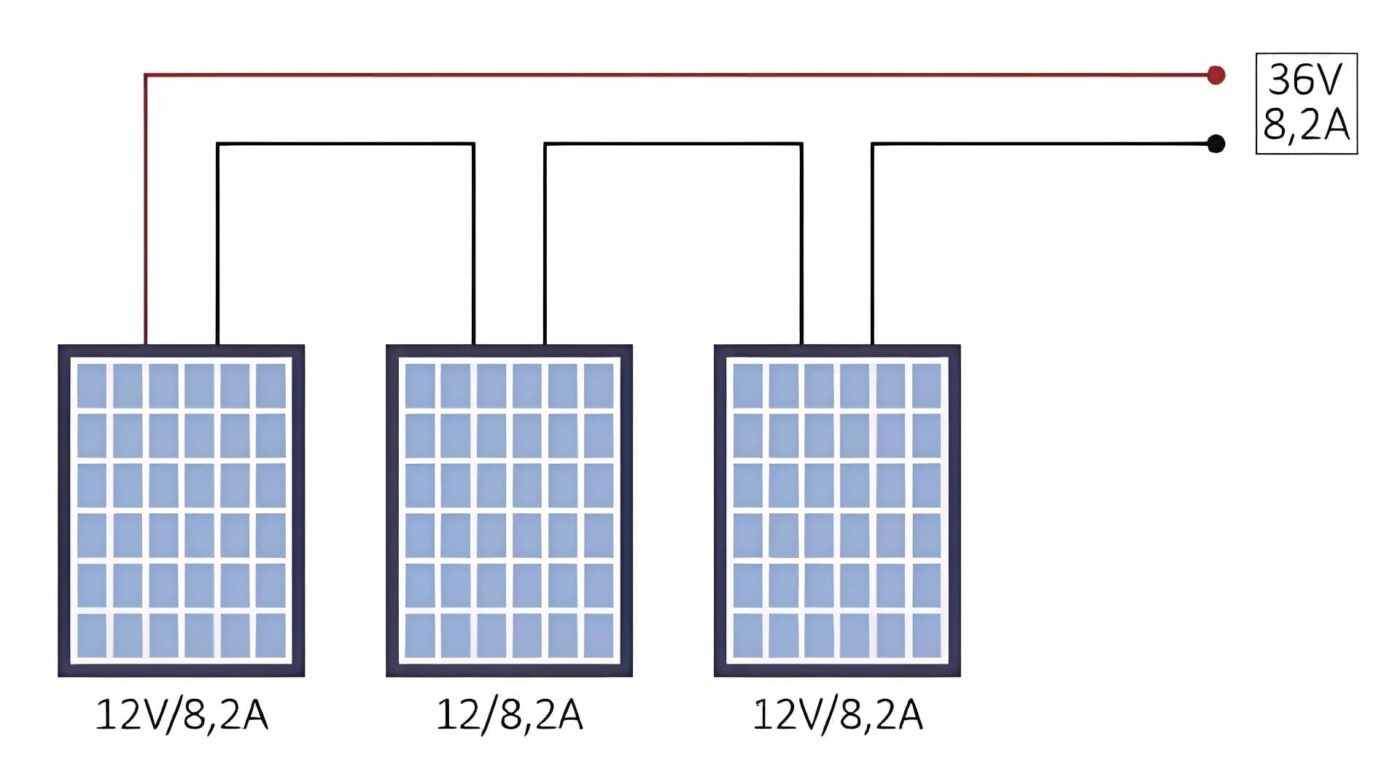Energía Solar
Series connection and its application in solar power systems
Series connection is one of the fundamental configurations in circuits, which is widely used for its characteristics and the benefits it offers. In this article, we will show you the most prominent aspects of this circuit connection.
With respect to the latter, it is important to note that such a connection can be used for both load and energy source configurations. We invite you to read our article on parallel connection, which is the counterpart to the series connection.
In this post, we will focus on series connection in the context of electrical power sources and its basic applications in solar power systems. Let’s get started!
Series configuration in DC electricity
In this connection, the positive terminal of one element is connected to the negative terminal of the next element. This way, the same current flows throughout the circuit, and the voltages add up.
Below, we present this connection and its characteristics graphically:

So, from this image, we can deduce the following regarding voltage:
VT = V1 + V2 + V3
Use of series connection
Series connection is used when, for any reason, a higher output voltage equal to the sum of the sources is desired, without increasing the power. It’s important to note that it’s recommended for all sources to be equal.
In cases where you have multiple devices that operate at a voltage higher than the individual available sources. You can create a series connection using the required number of DC power sources to achieve the desired voltage.
It’s important to remember that with this distribution method, the current remains constant. One common use of this type of connection is to create battery banks. For example, by connecting 12 cells of 2 Vdc each in series, you can form a battery bank of 24 Vdc
Operation of the series connection in photovoltaic systems
As it is well known, when the photovoltaic system exceeds 3000 W, it is recommended for efficiency reasons that it operates at 24 Vdc. However, if your system is installed with less than 300 W, you are probably using 12 Vdc solar panels.
Given the above, what can you do? You could consider two solutions:
- Replace the 12 Vdc solar panels with 24 Vdc panels, but this might be uneconomical.
- Reconfigure the wiring by connecting the 12 Vdc solar panels in series with new 24 Vdc panels. Here’s a graphical representation of this proposal:

As you can see from the figure above, if you make this series-parallel connection with the solar panels. You should also connect the batteries in series to obtain 24 Vdc and then add them, in turn, in parallel with the system.
Some additional notes
It is worth noting that you will hardly find a pure parallel or series connection in a photovoltaic system. Most of them are a combination of both, as shown above.
Now, regarding the use of batteries, in our post Batteries: everything you need to know we explain everything about them.
It is obvious that you will need to replace the inverter or adjust it to operate at 24 Vdc. So we recommend acquiring it with future expansion in mind.
In light of the above, we recommend our article Example of selecting a solar inverter based on DC input voltage, which is already published on energydcac along with other exciting articles.
Finally, as you can see, there are significant advantages to series connection in photovoltaic systems.
Did you find this post useful? If so, please let us know in the comments. If something is unclear, do not hesitate to contact us, and we will be happy to assist you. Until next time!

